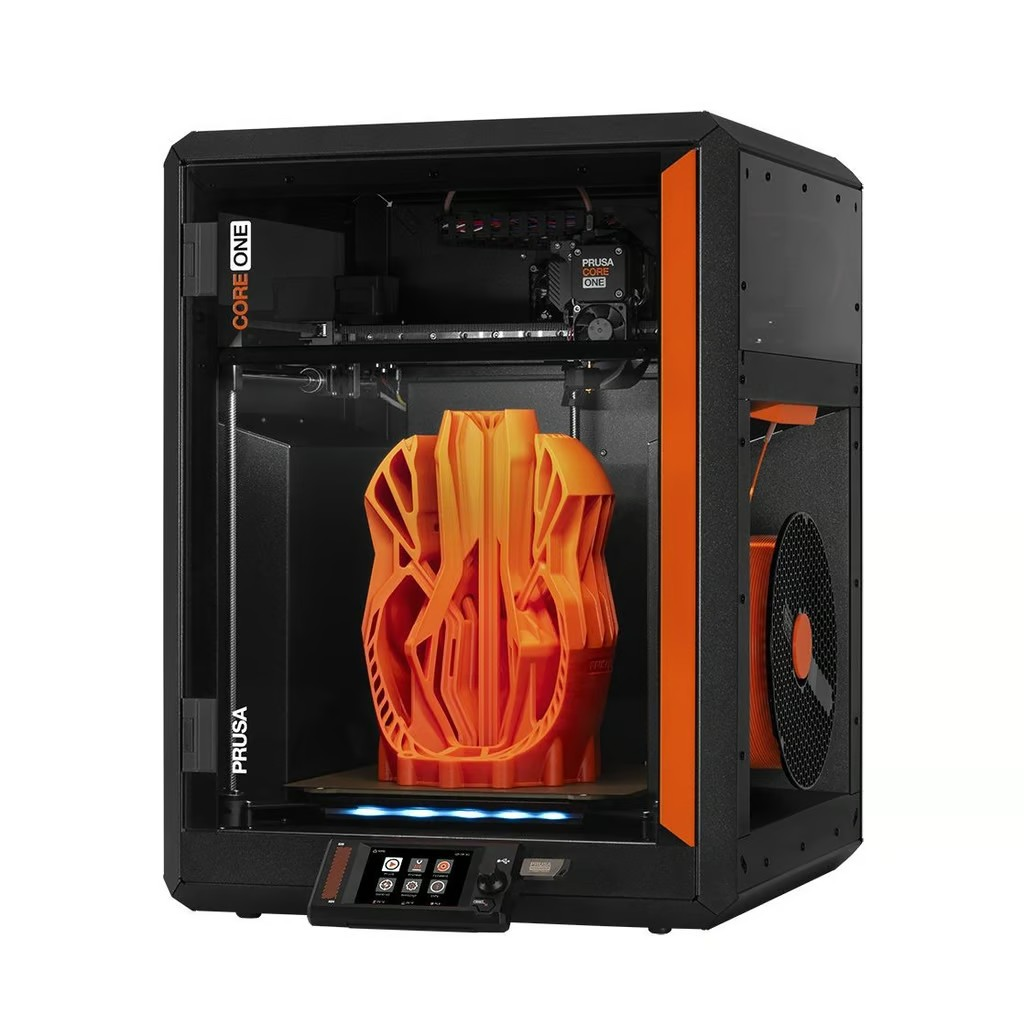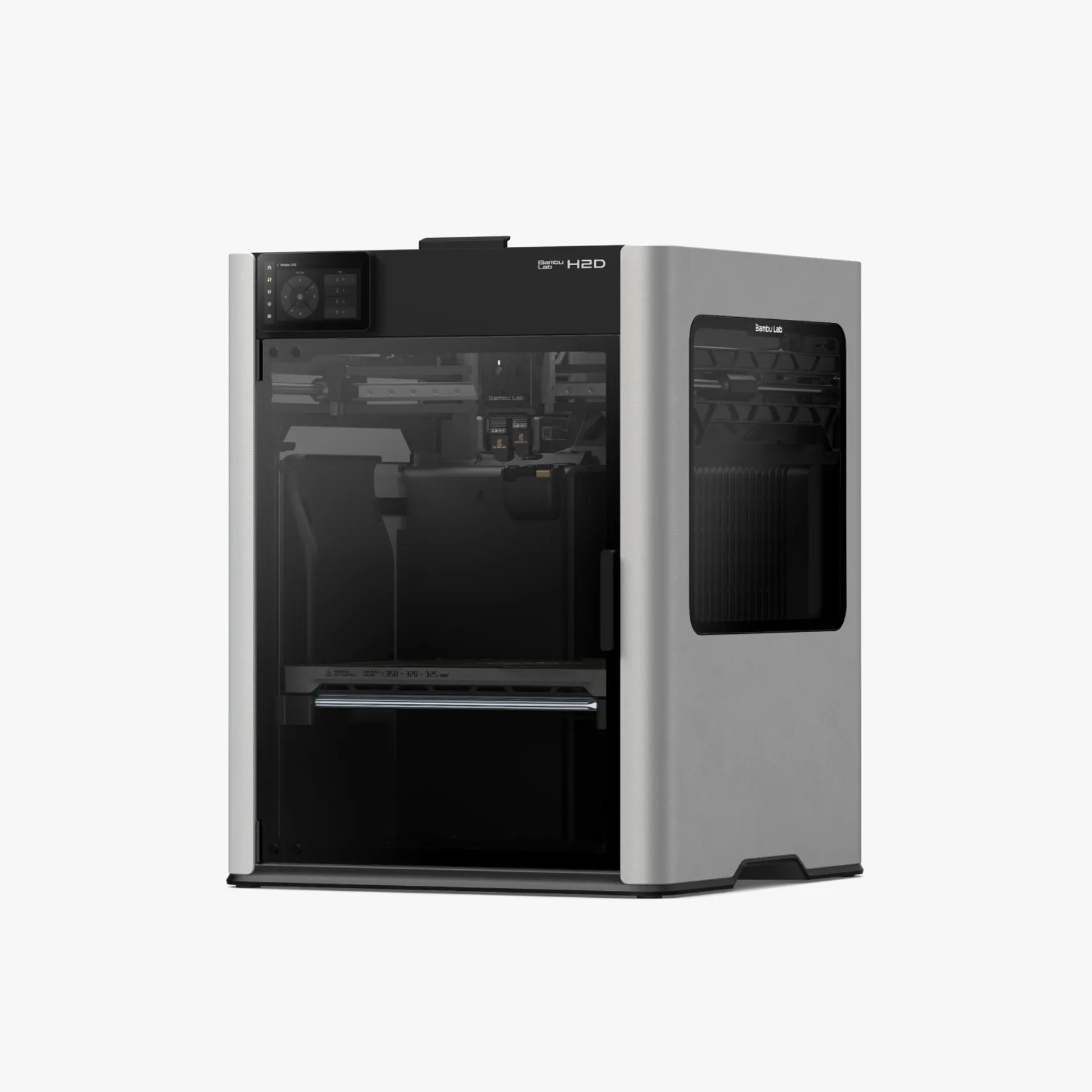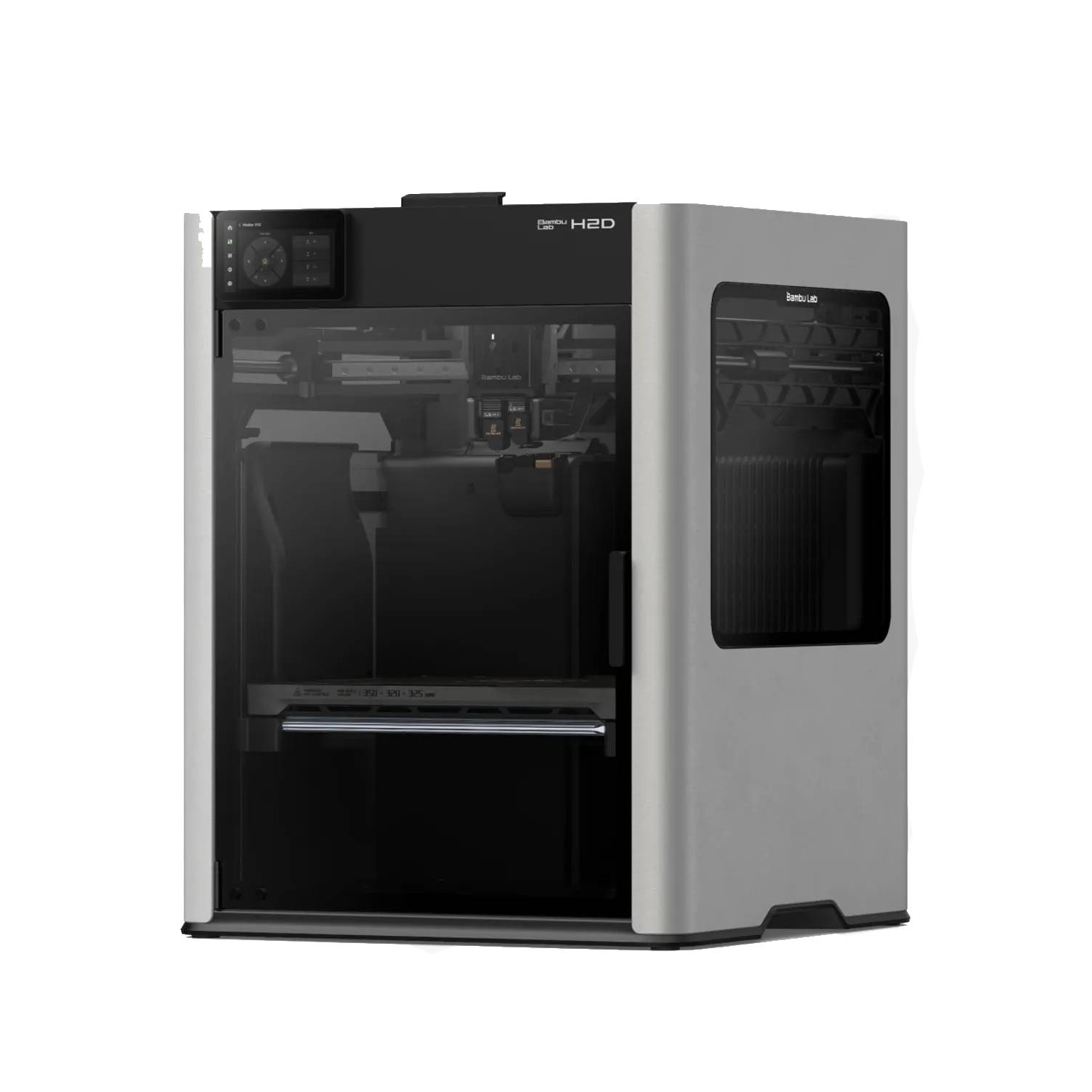One of the simplest ways to improve a 3D printer has always been plopping some walls around it to keep drafts away and heat trapped. It’s a great solution to make warp-happy materials a little easier to print.
There’s less space to enclose when a printer’s heat bed moves on the Z axis instead of the Y, so the recent popularization of CoreXY kinematics has contributed to a surge in enclosed 3D printers at all price points. Often kitted out with transparent doors, auxiliary fans, and temperature-regulating case fans, you’ll have an easier time working with materials like ABS with one of these systems.
Better yet, enclosed 3D printers are typically completely pre-assembled – snip a few zip ties, plug it in, and you’re good to go – making them great options for beginners. So, here’s what we consider the best enclosed 3D printers available today.
How to Pick an Enclosed 3D Printer
From the aesthetics: making a home 3D printer more presentable (and a little quieter); to function, helping maintain temperature and avoid drafts to help along materials prone to warping; to even safety, keeping children’s fingers away from hot or moving components and limiting the spread of VOCs (which is no replacement for good room ventilation), there are plenty of reasons to want an enclosed 3D printer.
The good news is that all of these benefits are touched on whenever a simple box is slapped over a 3D printer, but you can help things even further along with the right machine.
More good news is that today, you’re spoiled for choice, with the popularization of CoreXY kinematics and Bambu Lab-inspired machines raising the bar on quality, capability, and ease of use.
Which Features Matter?
When choosing an enclosed 3D printer, you should first look for a full set of features. Any enclosure will help warp-print materials succeed, but an actively heated build volume will go the furthest – something missing in most budget options. And, while keeping heat in is good for many materials, too much heat can cause trouble for others: you’ll want to make sure there’s a chamber fan for temperature regulation to avoid heat creep, and more powerful fans may even make printing low-temperature filaments like PLA viable without propping a door open for airflow. In the same vein, you’ll want some help with cooling provided by an auxiliary fan mounted to the enclosure to help push PLA print speeds as high as they can go.
Ventilation options are nice to have but aren’t common. While a mounting point for a vent hose might not be present, simple filtration like activated carbon is (though it’s no replacement for ventilation). Beyond that, it’s just quality of life. Lights and cameras help you see inside a dark box, and thoughtful design can make daily use a little easier.
Top Pick: Prusa Core One
The Prusa Core One is a CoreXY 3D printer with a 250×210×270mm build volume. It features an enclosed, passively-heated but actively managed chamber, and a high-flow nozzle as standard. Known for precision and speed, it’s ideal for professionals and hobbyists seeking reliable, high-quality prints.
- Fully enclosed and can stay closed for all materials
- Massively economic with its footprint
- The most plug-and-play Prusa yet
- Camera not standard equipment
The Prusa Core One achieves the one thing most enclosed 3D printers can’t: printing low-temperature materials with its enclosure resolutely closed. No jarred doors or propped lids, just 24/7 shuttered printing, no matter the material.
It also helps the Core One’s case that it’s Prusa Research’s most complete-feeling system to date. For your $949 (if you fancy the time-honored tradition of building it yourself, otherwise it’s $1,299 for an assembled unit) you get superlative print quality, a hallmark of the brand, as well as active chamber filtration and regulation, which lets the printer moderate the chamber’s temperature and ensure printing performance. Important to note that the Core One does not have an actively heated chamber, instead opting to make smart use of the ambient heat generated from the printing process.
The build volume exceeds that of the company’s MK4 series of printers, using the same build plates (250 x 220 mm) and stretching the print height to 270 mm, all while reducing the footprint over said printers to a measly 415 x 444 x 555 mm.

It is incredibly space-efficient, with recesses in the enclosure giving space for filament and accessories. The company proved at launch that the system is customizable to the extreme, with a wry Bamboo-wrapped version hogging the spotlight at 2024’s Formnext additive manufacturing show.
The Prusa Core One is the complete Prusa experience with an integrated enclosure out of the box. Arguably best of all, owners of the company’s MK4 series machines can upgrade their way to the Core One with the company’s upgrade kits, reusing many of the parts they already have in their possession.
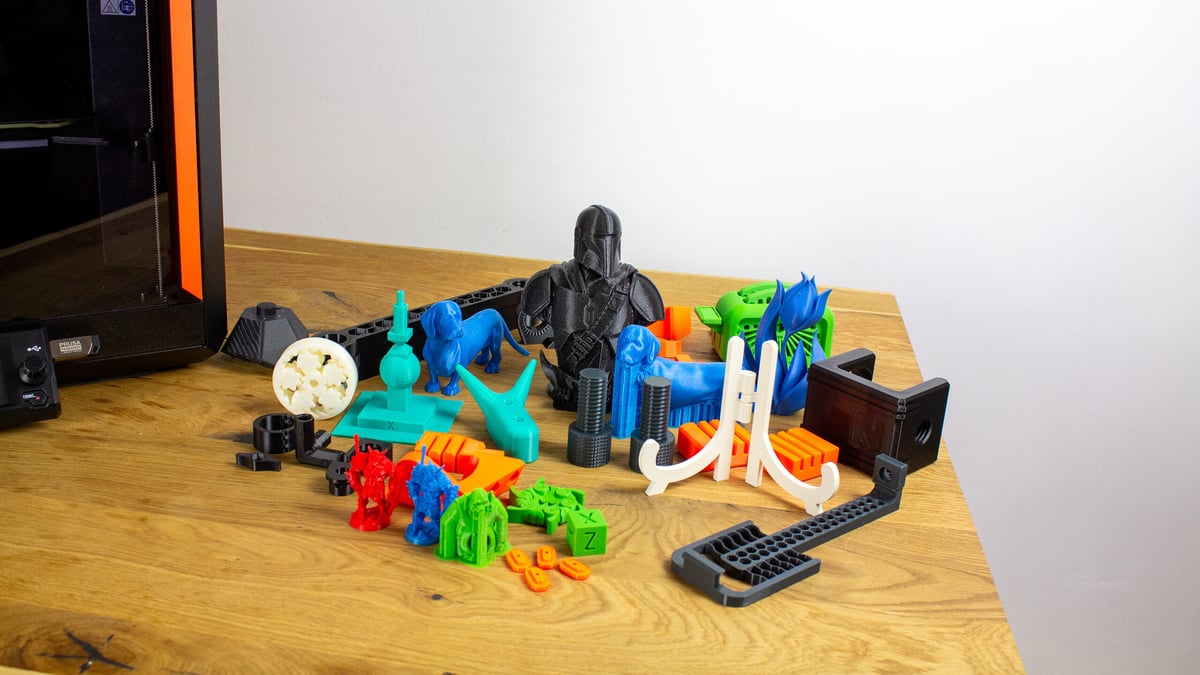
Budget Pick: Elegoo Centauri Carbon
The Elegoo Centauri Carbon is a fully enclosed high-speed CoreXY 3D printer with a 256mm³ build volume. It features automatic bed leveling, a dual-surface magnetic print bed, and compatibility with advanced materials like carbon fiber composites.
- Fully enclosed
- Auxilary and chamber fans for better cooling and filtration
- Fast heating bed and hot end
- The door needs to be propped open for low-temp prints
Arguably the hottest 3D printer of 2025 alongside the Bambu Lab H2D, Elegoo’s bonkers Centauri Carbon is the archetypical “standard” enclosed CoreXY 3D printer in 2025 – metal panels, glass door and lid, with the potential for high speed 3D printing and a fast-heating print bed all wrapped around a 256 x 256 x 256 mm build volume.
Its biggest party trick is sheer value for money, costing a slim $299 for all that printer. (We’ll caveat that this is set to change due to the tariffs imposed by the Trump administration, but for now, Elegoo has promised to honor orders at the current prices.)
As is typical of Elegoo’s machines, the firmware is relatively locked down, and in this particular case, built on Marlin, meaning there’s no immediate possibility for users to Klipperfy it without adding a single-board computer to the mix.
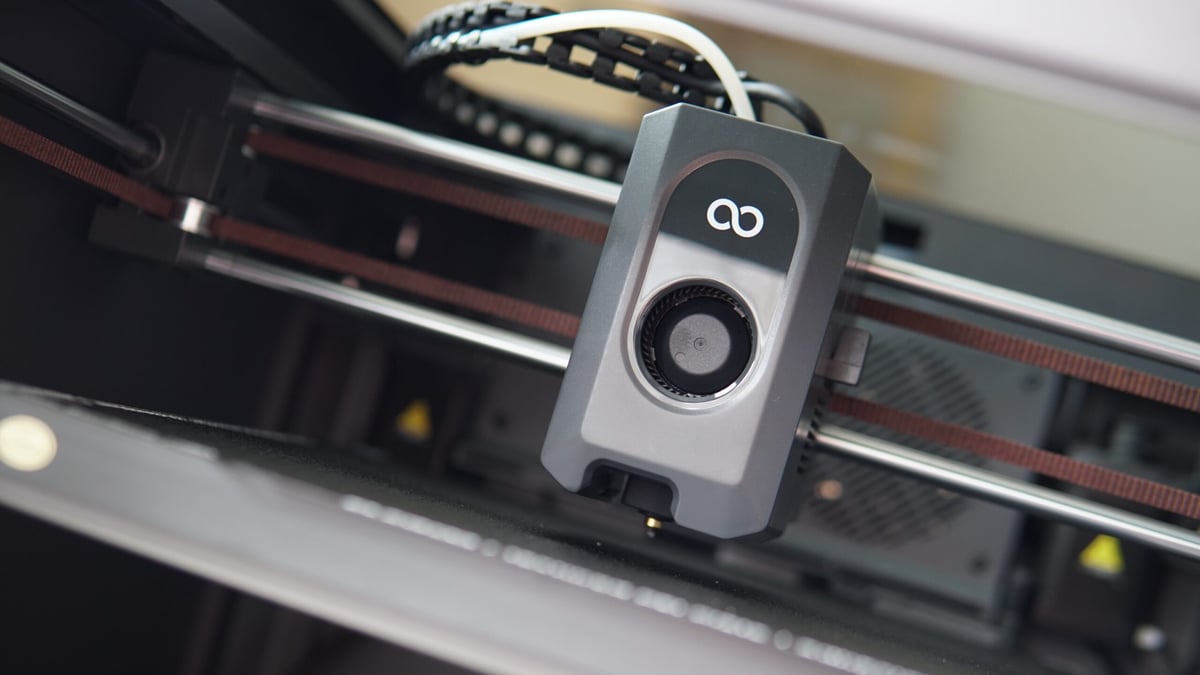
Unlike the Prusa Core One and Bambu Lab H2D on this list, it’s not recommended to leave the Centauri Carbon fully closed when printing PLA; while it does feature a case fan, it’s not enough to fully regulate the chamber temperature and could lead to clogs.
Besides this, though, we’ve found the Centauri Carbon to be a delightful workhorse for the price, handling ABS and similar warp-happy materials in its stride.

Upgrade Pick: Bambu Lab H2D
The Bambu Lab H2D is a dual extrusion 3D printer that can be scaled up to combine laser cutting, engraving, and plotting. With dual nozzles, a 350 x 320 x 325 mm build volume, and AI-powered precision, it excels in multi-material projects, offering versatility for advanced creators.
- High-quality multi-material printing
- Intelligent heated chamber
- Upgradable functionality
- It's heavy! (Team lift only)
Another 3D printer in the enclosed-means-enclosed crew, the Bambu Lab H2D can comfortably be left shut no matter the material or job, with self-actuating roof and rear case flaps intelligently controlled by the system to suit the job and required chamber conditions. In this regard, it’s the smartest printer on this list.
It’s also the most feature-packed, with the basic H2D 3D printer a high-speed dual-extrusion-capable medium-format machine with the potential to be upgraded not only to receive dozens of filaments via multiple Bambu Lab AMS units, but also other creative functions like laser cutting and pen plotting.

The real efficiency comes from being able to task a material to each hot end, unlocking “poop”-free material switching, with only a slender prime tower besides the model to show for it. Each hot end can be hooked up to its own AMS device, too, letting you get creative with the colors and materials you mix. Each hot end is quick-swappable, too, like with the brand’s A-series of printers, so switching to smaller or larger-bore nozzles for high-detail or strength and speed is at your fingertips.
The H2D hasn’t quite won over public opinion just yet, with many fixated on the potential mess from the printer’s non-printing functions. We can say from experience that the basic H2D is a solid, multi-material 3D printer, if a little fussy with flexibles. The only problem right now in May is getting your hands on one – demand appears to be high, and stocks are unpredictable thanks to the situation with global shipping and tariffs.
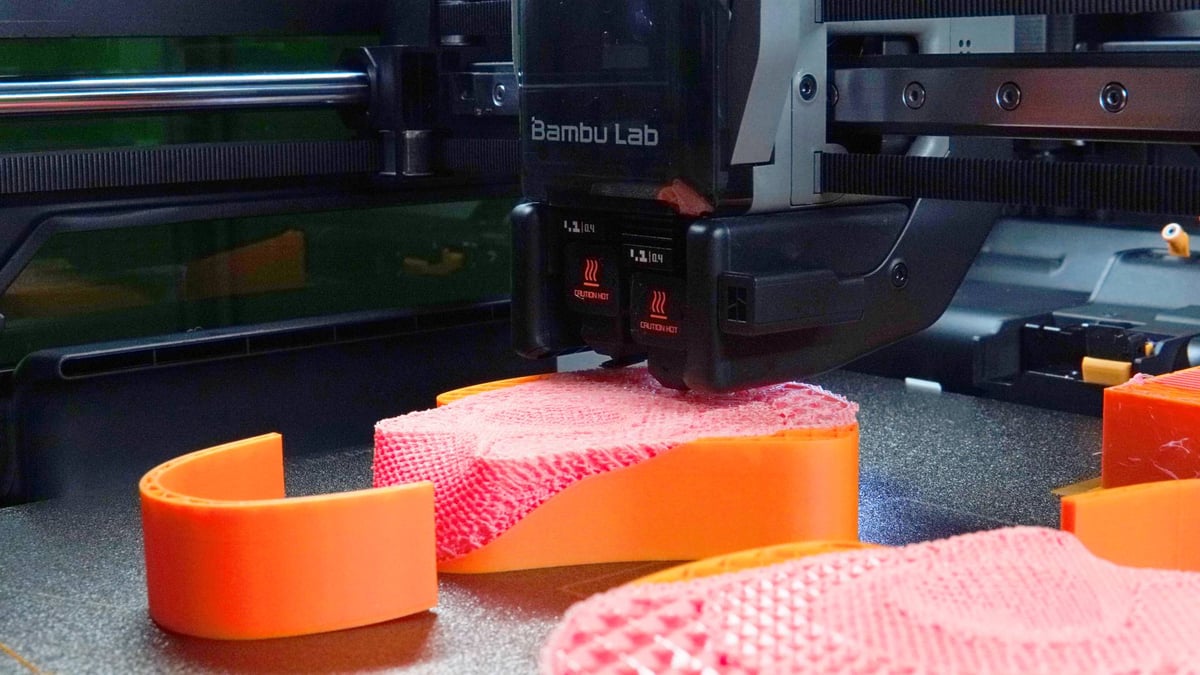
Other Machines
For better or worse, enclosed is becoming the dominant design form in desktop 3D printing, with high-quality and high-cost systems rubbing shoulders with managed instability in inexpensive CoreXY kinematics offset by firmware trickery, all outputting decent quality prints at high speed.
We’ve been hands-on with plenty in the lab lately. Besides our recommendations above, Qidi Tech’s Plus 4 has tickled us enough for it to carry our medium-format recommendation in our Best 3D Printers guide. You get active chamber heating, temperatures on the higher end for desktop printing, making warp-happy engineering materials a possibility, plus nifty integrated carry handles that sound like small beer, but actually are quite nice to have. We didn’t find it as economical with space or performance compared to the Core One, though, and the H2D, competitive with build volume, dramatically expands the printing possibilities. A fine printer nonetheless.
Anycubic’s S1 Combo (sometimes referred to as the S1C in Anycubic’s documentation) promises effortless multicolor 3D printing. Much like the open-frame Kobra 3 before it, the printer’s interactions with the company’s ACE Pro filament feeding unit have been unreliable for us. Time and time again, we’ve had to pull it apart to fix stray filament and loose clippings that prevented prints from succeeding. Testing continues, and we hope to get on track with a string of successful prints with it, but so far, no dice.
Waiting in the wings, we have Creality’s K2 Plus, which will be the next printer we put through its paces. The K2 Plus is also a medium format printer, promising high performance and multicolor printing. It will be an interesting machine to test alongside the H2D. Stay tuned.
What's Changed?
This article is relatively young in the annals of All3DP guidedom. As such, we’ve only got one update to spell out so far:
Update – May 8, 2025: Removed: Qidi Tech Smart 3, Plus 3, and Bambu Lab P1S. Added: Prusa Core One, Elegoo Centauri Carbon, and the Bambu Lab H2D.
How We Test
If there’s one thing that testing a lot of 3D printers has taught us, it’s that maintaining a broad benchmarking scheme for 3D printers is impractical for getting a sense of what a 3D printer is like to use and live with. Holding a sub-$200 self-assembled printer for hobbyists to the standard of a $6,000 production machine designed to handle engineering-grade materials won’t tell you that the former is a breeze to set up and the latter a tangled web of firmware updates, buggy systems, and unreliable performance.
We want our reviews and buyer’s guides to cut straight to the chase. What is it like to use a printer? What are the defining features like? What didn’t we like? And, more importantly, is it worth the money? We don’t want to get bogged down benchmarking numbers out of context or hung up on issues affected by more variables than we can control.
Who Are We Testing For?
Our buyer’s guides and reviews take the intended end user of a 3D printer into consideration. We imagine what they’re likely to do with it and focus the testing on challenging this. If we have a large-volume printer, for example, we’ll be printing – surprise, surprise – large prints, making use of the entire bed, and checking the performance at the limits of Z-height.
Other points of consideration for what makes the best 3D printer include ease of use, supporting software, and repair options. If something goes wrong, how easy is it to fix the machine? Does the documentation or customer service provide adequate information?
We strive to answer all these questions and more in our quest to find the best 3D printer for you.
Why Should You Trust Us?
Trust is important to All3DP, so our product testing policy is strict. When sourcing test units from a manufacturer, we do so under a zero guarantees policy. We make no guarantee of coverage in exchange for the printer, and the first time a manufacturer sees what we think is when we publish the content.
If a manufacturer doesn’t reclaim the unit after testing is complete, it is donated to a local cause or goes into deep storage for responsible disposal later. We occasionally buy machines for testing, too. In such cases, machines purchased by All3DP either remain in the office for team usage or are donated or disposed of in the manner described above.
Manufacturers or benefactors donating units for review do not influence the outcome or content of the reviews we produce. To the best of our ability, we will investigate abnormal issues with the manufacturer to glean better context or get insight into their awareness of the problem. But we make no excuses for poor design or bad QA.
How We Monetize Our Content
One method we monetize our content at no additional cost to the reader is through affiliate product links. If you click on a shopping link featured in our buyer’s guides and reviews, we may receive a small commission from the store if make a purchase. This is at no additional cost to you. For more meaty content policy details, we cover it all in the advertising and commercial activities section of our terms of use.
Which 3D Printer is Best for Me?
For most readers, our top recommended 3D printers are your best bet in a given category.
But, facing the fact that there is no one-size-fits-all solution to home 3D printing, we’re here to help. Here are some pointers to orient you in this terminologically dense but wonderful world. (A word on terminology, we have a handy glossary of terms to know at to bottom of this article.)
Beginner’s printers
Many 3D printers pitched for “beginners” or children go to such lengths to baby the user that they quickly become claustrophobic experiences. You will encounter more limitations than possibilities as your experience grows. If you aren’t satisfied with a “beginner” 3D printer’s features, we’d recommend a budget pick instead. You’ll save a little money, and the opportunity to learn by doing is far greater. And if something goes wrong, there are giant tribes online for each printer that have already asked and answered every question under the sun.
Follow the crowd
While the general quality of budget 3D printers has dramatically improved in recent years, quality control is often lacking. While manufacturers with large user bases are adapting to meet the demands of their newfound fans, including better customer support, there are usually better wells of knowledge to be found in the owners themselves, who contribute to the vast forum knowledge bases for some 3D printers.
Reviews matter
We have zero obligation to manufacturers to sugarcoat what we find, and the first time they read it is when you do too. That’s why you can trust our reviews. We don’t pander to anyone, and our experience with the printer is what you read on the page.
If you can’t find any information about a printer you’d like to know more about, let us know at editors@all3dp.com.
Understand the costs
A 3D printer for the home is rarely ever a one-and-done investment. Besides the continual purchase of materials, maintenance costs on perishable printer parts can stack up – think nozzles on an FDM printer or FEP film on an MSLA machine. Of course, parts can wear down or break, too, meaning sourcing replacement parts is a sensible consideration if you plan to print long-term. Printers with roots in the RepRap movement and open-source designs will be easiest to source parts for, with off-the-shelf components part and parcel of the design ethos behind them. Enclosed-design printers aimed at beginners may offer the gentlest introduction to printing, but your options to source spare parts will often be limited to the manufacturer. That’s if you can even get to and diagnose the problem.
Know why you want to 3D print
The thrill of a new hobby will only sustain you so far. Being the desktopification of an otherwise complicated manufacturing process, expect to encounter, sooner or later, problems with a home 3D printer – even the occasional show-stopping issue. Having an end goal in mind for your printing gives you purpose and a reason to learn the solutions to the problems. Printing simply because it looks cool will result in a small mountain of useless doodads and, eventually, disinterest at the hands of cost, frustration, and the buildup of useless plastic trash.
When you do know, pick a printer that will make it easier
Most home 3D printers are single-extrusion fused deposition modeling machines, meaning a single printable material is extruded through a single nozzle. Versatile enough for many applications through material compatibility, they’re safe machines to start with. But if you know you need to print objects with challenging geometries or semi-enclosed volumes, a dual extrusion printer would make your printing far easier. Likewise, single objects that need to have different material properties will only be achievable with dual extrusion. A resin printer will be the way to go for high-detail miniatures. Understand the technologies to find a printer that best suits your needs.
Pick a printer appropriate for your space
While the size of FDM 3D printers can vary greatly, the spillover is small. You’ll get some emissions from the filament melting, cloying the air, making it inadvisable to spend prolonged periods nearby. Generally speaking, the cleanup is minor and relatively easy to contain, depending on the models you print.
Resin 3D printing, however, is dramatically different and has unique demands that should make you think twice before investing. To varying degrees, the resin is smelly and toxic to you and the environment. It requires dedicated cleanup stations and personal protective equipment. You typically need 95 %+ isopropanol to clean prints and dissolve uncured resin from surfaces.
All printers should be operated in well-ventilated spaces, but this applies doubly to resin 3D printers.
Kickstarter – It’s complicated
While many excellent 3D printers have gotten their big break on Kickstarter, there’s the unavoidable issue that the platform is not a store. You are not buying a printer when you commit money to a campaign on Kickstarter; you are backing a vision. It’s putting money into the pot to help a company or person trying to achieve something.
You get nothing in return if a project is grossly mishandled and the money disappears. Often what you do get is the beta version of the product. You are paying for early access and all the wrinkles across all stages of the product that come with it.
We’re seeing more big-name companies turning to Kickstarter than ever to launch their products – it’s a safe way for them to gauge demand and drum up some interest against the pressure of a ticking countdown. Despite many companies being capable of outright launching products, they go cap-in-hand to enthusiasts with the promise of shiny new tech. Don’t be that user unless you absolutely must be the first to use a product and have money you can afford to lose.
We don’t think it’s worth the risk, but in the interest of cool new tech, report on new campaigns with our news coverage. You will never see a Kickstarter 3D printer in our buyer’s guides unless it has completed its campaign and the printer is widely available at retail, with all the protections that come with buying from a store.
Best Professional 3D Printers
But where’s the UltiMaker? Or Formlabs? What about Raise3D? Desktop Metal?
In the past, we’d list the best professional 3D printers alongside what we consider consumer or hobby-oriented machines (the printers we mainly focus on). An apples and oranges comparison, we know.
With this in mind, we created All3DP Pro, a wing of our content exclusively covering the professional applications of 3D printing and additive manufacturing solutions. Here’s a selection of articles covering the best 3D printers for professional use to get you started.
- Top 6 Professional 3D Printers Under $10,000
- The Best 3D Printers for Small Businesses in 2025
- The Best Metal 3D Printers in 2025
- Best Desktop-Size Carbon Fiber 3D Printers: Our 10 Picks
- The Best Carbon Fiber 3D Printers for Industrial Use
- SLS 3D Printer Buyer's Guide 2025
- The Best Independent Dual Extruder (IDEX) 3D Printers
- The Best Ceramic / Pottery 3D Printers
- The Best Dental 3D Printers 2025
- PEEK 3D Printer Guide & All You Need to Know
Glossary of Terms
Choosing the best 3D printer is tricky, not least because the terminology surrounding 3D printing is dense. Here are some need-to-know terms, their explanations, and useful links to help you on your way to 3D printing mastery.
FDM: Fused deposition modeling, otherwise known as FDM, is a 3D printing process that extrudes heated thermoplastic material through a moving nozzle to build an object layer by layer. FDM is a trademarked term, which led to the RepRap open-source movement to coin the alternative phrase “fused filament fabrication” (FFF), but the two are interchangeable.
Filament: Filament is the base material used to 3D print objects via FDM. The filament is typically a solid thermoplastic fed to a print head, heated to its melting point, and extruded through a small nozzle. Filament is commonly available in spools of either 1.75 mm, 2.85 mm, or 3 mm diameter widths – dimensions that dictate the printers that can use them.
G-Code: G-code is the machine language used to instruct computerized tools such as 3D printers. Giving coordinates and instructions for tool heads and other non-movement functions, it is almost exclusively generated by slicing software. It comprises a library of commands to control specific actions like motion, speed, rotation, depth, and other related switches and sensors used in a machine’s operation. You can get to grips with G-code in no time with our guide to G-code commands.
Heated bed: This is a build plate that is heated so that the few layers of extruded plastic are prevented from cooling too quickly and then warping. A heated bed is essential for working with ABS or PETG materials but not so much with PLA.
Hot end: This is the cluster of components that heat and melt the plastic for deposition through the nozzle.
Extruder: Used by some to describe the entire system of parts that pushes and melts filament, extruder can also refer specifically to the motor and accompanying gears that grip the filament, feeding it to the hot end. How the extruder is arranged can affect the printer and its capabilities. There are two common arrangements: Bowden and direct. It’s a messy subject with overlapping terms and technical explanations; our guide to 3D printer extruders gives you all the knowledge to make sense of it.
Bowden: A style of extruder that sees the extruder motor positioned away from the hot end – typically the structural frame of the printer or on one end of the X-axis gantry. So-called for the Bowden cable and its action of allowing a wire to move freely within tightly constraining tubing, the Bowden extruder feeds filament through a PTFE tube directly into the hot end.
Direct Extruder: The other commonly seen extruder type, a direct extruder sees the extruder motor and associated feeding mechanism mounted directly to the hot end, with barely any distance between the feed and the melt zone of the hot end.
Dual Extrusion: Some 3D printers carry two extruders/hot ends, allowing them to incorporate multiple colors or materials into the same print job. While the obvious appeal comes from the possibility for decorative two-tone prints, the real benefit of dual extrusion systems is combining different materials, such as dissolvable support material, to enable the printing of otherwise impossible geometries. It’s a deep topic worth exploring more in our guide to all you need to know about dual extrusion.
PLA: Polylactic Acid, otherwise known as PLA, is a thermoplastic commonly used as a material for printing with FDM 3D printers. It’s easy to work with and is available in many colors and finishes. PLA is somewhat brittle – don’t expect to print strong items with it – but it remains popular for decorative printing thanks to its low cost. You can learn more about PLA in our guide dedicated to the topic.
SLA: Stereolithography is a 3D printing technology that falls under the broader process of vat photopolymerization. The term is often (incorrectly) used to describe all methods of vat polymerization – really, it’s a particular technology that uses a directed laser beam to trace layers into a vat of liquid photopolymer resin. Alongside SLA, other technologies are considered vat polymerization.
Resin: The material used in desktop SLA, DLP, and LCD (MSLA) 3D printers. A blend of chemicals that includes a photoinitiator, resin solidifies under ultraviolet light. Highly toxic and difficult to clean up after a spill, care, attention, and personal protective equipment are musts when working with resin. It is an unpleasant material, and wastage must be disposed of in accordance with local laws. Despite all the warnings, it’s the only way to go for intricate detail.
LCD 3D Printer: A common term for resin 3D printers that use an LCD as a layer mask over UV light. The de facto standard in inexpensive resin 3D printers, the technology is cheap and widely used. The LCD panels are consumable, though, with monochrome LCDs typically having lifespans in the low 1,000s of hours.
MSLA: Mask stereolithography (MSLA) is a term coined by Structo but popularized by Prusa Research. It refers to, basically, the LCD 3D printer as described above.
Micron: One-thousandth of a millimeter. This unit of measurement is commonly used in 3D printing as a value to indicate accuracy, resolution, or surface finish.
Slicer: 3D printing works by building an object layer by layer. A slicer is a program that divides a 3D model into flat layers and generates the machine code for the printer to trace out said layers. The output of a slicer for FDM 3D printers is typically G-code, which gives instructions and coordinates for the printer to execute. Our deep dive explaining what exactly a slicer is gives good foundational knowledge. Many popular slicers are free and open source. Others are proprietary and machine-specific. It’s an essential tool for successful 3D printing.
STL: STL is the most popular file format for 3D printing. Developed by 3D Systems in the ’80s, the STL file type only contains the surface geometry of a 3D object. Despite industry efforts to move onto more efficient and data-rich formats such as 3mf, STL endures and is the most commonly found 3D model file type on popular 3D model file repositories. We explain in more detail in our guide to what exactly STL is.
Open Source: The term given to a product, typically software, but also applicable to hardware that is freely open for others to modify and redistribute according to their needs. In 3D printing, this is often in the spirit that individuals are free to modify, improve, and share changes to the source material for others to test, iterate, and reciprocate. Open source licenses govern the fair and correct usage of open source works, giving terms and conditions that ensure the freedom of access to the creation and any derivatives.
RepRap: A project started in 2005 by Dr. Adrian Bowyer, a mechanical engineering lecturer at the University of Bath. Created to develop a replicating rapid prototype, a low-cost machine capable of printing replacement parts for itself or other new machines. The vast majority of desktop 3D printers stem from the work laid down by the RepRap project. We have a fascinating alternative RepRap Wiki page on the topic if you want to dig deeper.
License: The text of "Best Enclosed 3D Printers of 2025: Our Picks in 3 Categories" by All3DP is licensed under a Creative Commons Attribution 4.0 International License.
